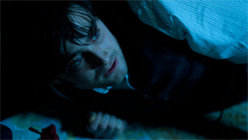Candles and cobwebs, cries from the marsh, fog machines on overdrive, a secluded manse stuffed to the rafters with eerily threatening Victoriana, and the Hammer Film Productions logo hovering over the credits — The Woman in Black has been tricked out with everything a cinematic ghost story needed.
In 1962.
And judging from the shrieks its haunted-house theatrics prompted from the Harry Potter fans who crammed a screening this week to see Daniel Radcliffe’s first post-Hogwarts adventure, those basic requirements may not have changed all that much in the ensuing half-century.
Sure, horror-movie conventions have altered in the interim — gore and brutality increasing exponentially — but director James Watkins takes a more old-fashioned tack with The Woman in Black, tying it to the gothic Hammer tradition in which ghost stories were less about gruesomeness than about finding effective ways to say “Boo!”
He’s found plenty: palm prints materializing on windowpanes, parrots whimpering on candle-lit staircases, crows erupting from fireplaces, cymbal-banging toy monkeys, and spectral children lurking behind every tree on the grounds of a magnificent gothic pile called Eel Marsh House. It’s there that doleful young solicitor Arthur Kipps (Radcliffe), who lost his wife in childbirth and is so incapable of pulling himself together that he’s in danger of losing both his job and the affections of his 4-year-old son, is sent by his law firm to sort out the estate of a woman who’s recently died.


